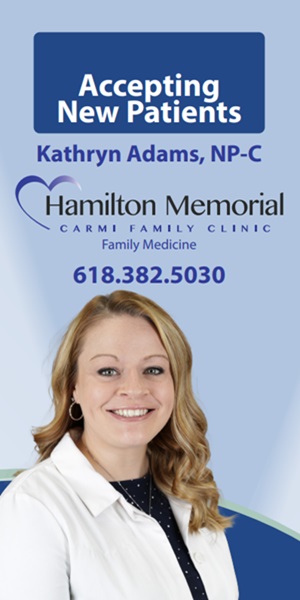The subject matter might be up in the air, but the career prospects sure are grounded with the Unmanned Aircraft System (UAS) program at Rend Lake College.
This year’s offering is being significantly bolstered to offer students the most cutting-edge training in the area for a field where the possibilities keep going up and up.
“With the addition of the new courses, we have the most comprehensive UAS program available in Southern Illinois. This is not just a test prep curriculum, we teach students not only how to pass the FAA Certification Exam, but we teach them how to apply what they have learned in the real-world. Students do not need to have a background in aviation, they only need to have an interest in the technology, and we teach them the rest,” explained UAS instructor Chris Edwards.
“We are now in our second year of the program. Also, we have two additional courses we have added to the program. They are UAS 1204 which is Advanced Flight and Nature Videography and UAS 1205 which is Videography Production.”
The two new courses offer valuable experience in one of the most practical applications to UAS piloting, shooting and editing video captured by the aircraft.
Advanced Flight, Nature Videography (UAS 1204) covers advanced UAS flying techniques, including various autonomous flight applications and strategies to deal with challenges in capturing video and stills. This course will address safety concerns when flying in and around controlled airspace as well as focusing on developing skills in videography.
Videography Production (UAS 1205) teaches basic and intermediate techniques for hands-on video editing on Adobe Premiere Elements 15. Students will take RAW video with their drones and learn how to turn the footage into professional looking movies, complete with audio, title and other text, transitions, color and lighting adjustments and removal of unwanted clips.
Applications for UAS run the gamut from agricultural work to fire and rescue to insurance adjusters.
“Instead of sending a company rep out into the field to walk all 300 acres of it, you can take an aircraft like what we use on campus and go up 200 to 400 feet and see the entire field. Then, if you have areas that you want to go investigate further, you just drop down in altitude and view it. All of that can be done without ever leaving your parked truck,” he stated.
“It’s supposed to create $82 billion worth of GDP bottom-line by 2020 and create over 100,000 jobs just in the United States. So, there is a lot of room for growth. It’s an exciting time to get into the field.”
Edwards detailed how the technology could be applied to search and rescue missions. UAS with infrared sensors can sweep large areas of ground to locate lost individuals. Law enforcement has also looked at utilizing the technology to track suspects who flee into wooded or fielded areas. Recently, the aircraft have been utilized for crash-scene reconstruction on the interstate, allowing officers to gain a better idea of the entire crash site without employing a costly helicopter.
Introduction to Unmanned Aircraft Systems (UAS 1200) covers many facets of UAS systems, including an examination of safety procedures, human factors, payloads, and information gathering. This course also incorporates flight simulations and live flying exercises.
Advanced Unmanned Aircraft Systems (UAS 1201) is an in-depth look at programming and flying UASs which will take place over these five weeks with a special look at the selection and operation of sensors, and post-processing and analysis of data.
The final class, Unmanned Aircraft Law and Test Prep (UAS 1202), will examine current FAA guidelines on the flight of a UAS system in U.S. airspace. It will also cover all applicable state and federal laws, plus serve as the test prep portion to study the FAA material to pass the UAS Certification Exam.
“So, now you are actually able to go out and take an FAA certified exam to go out and get your FAA Unmanned Aircraft Pilot’s license. That allows you to go out and actually get hired and make money flying these aircraft. Here at Rend Lake, we are focusing on helping students prepare for their FAA exam and teaching novices how to fly responsibly in the national airspace,” Edwards said.
To become a certified pilot with the FAA, students must be 16 years of age, pass an aeronautical knowledge test, be vetted by the Transportation Security Administration, and be in a physical and mental condition to safely operate a UAS.
The three original required courses for the program run one after another in a single semester. Upon completion, participants are granted an occupational certificate. The program’s two new offerings are provided as supplements to certificate curriculum.
More information about UASs can be found on the FAA’s website www.faa.gov/uas.
For more information about RLC’s UAS program, contact Chris Edwards at 618-437-5321, Ext. 1278 or [email protected].










